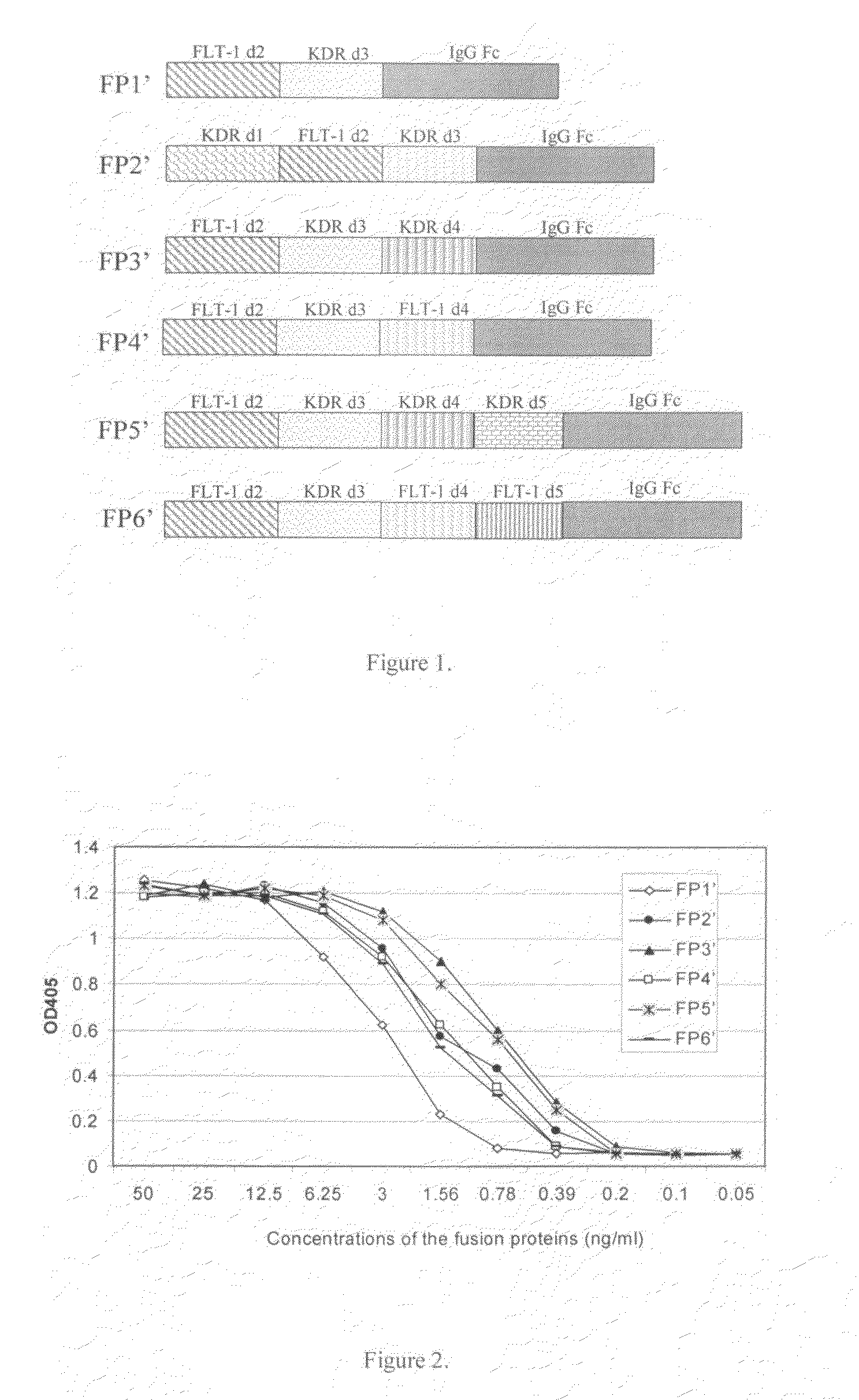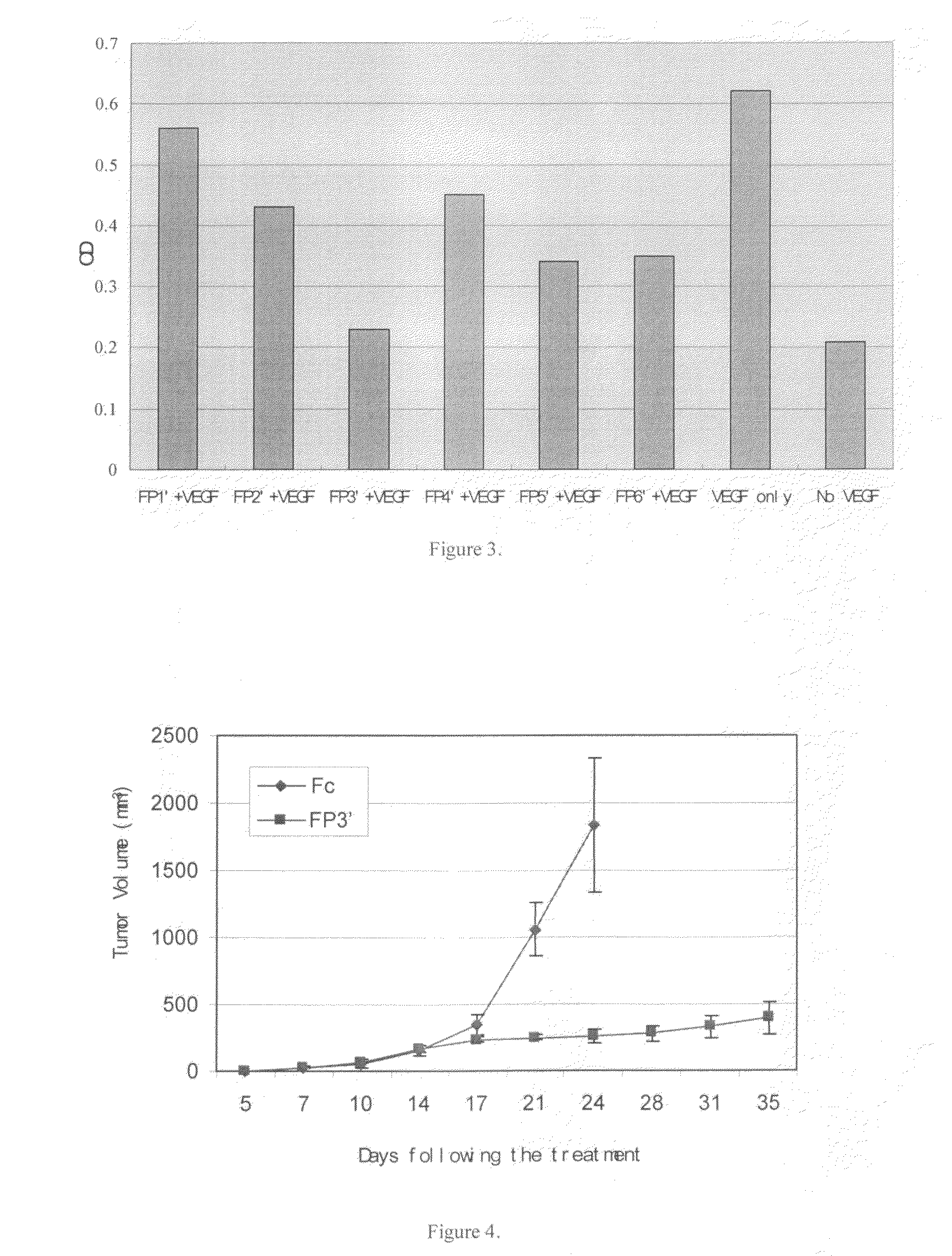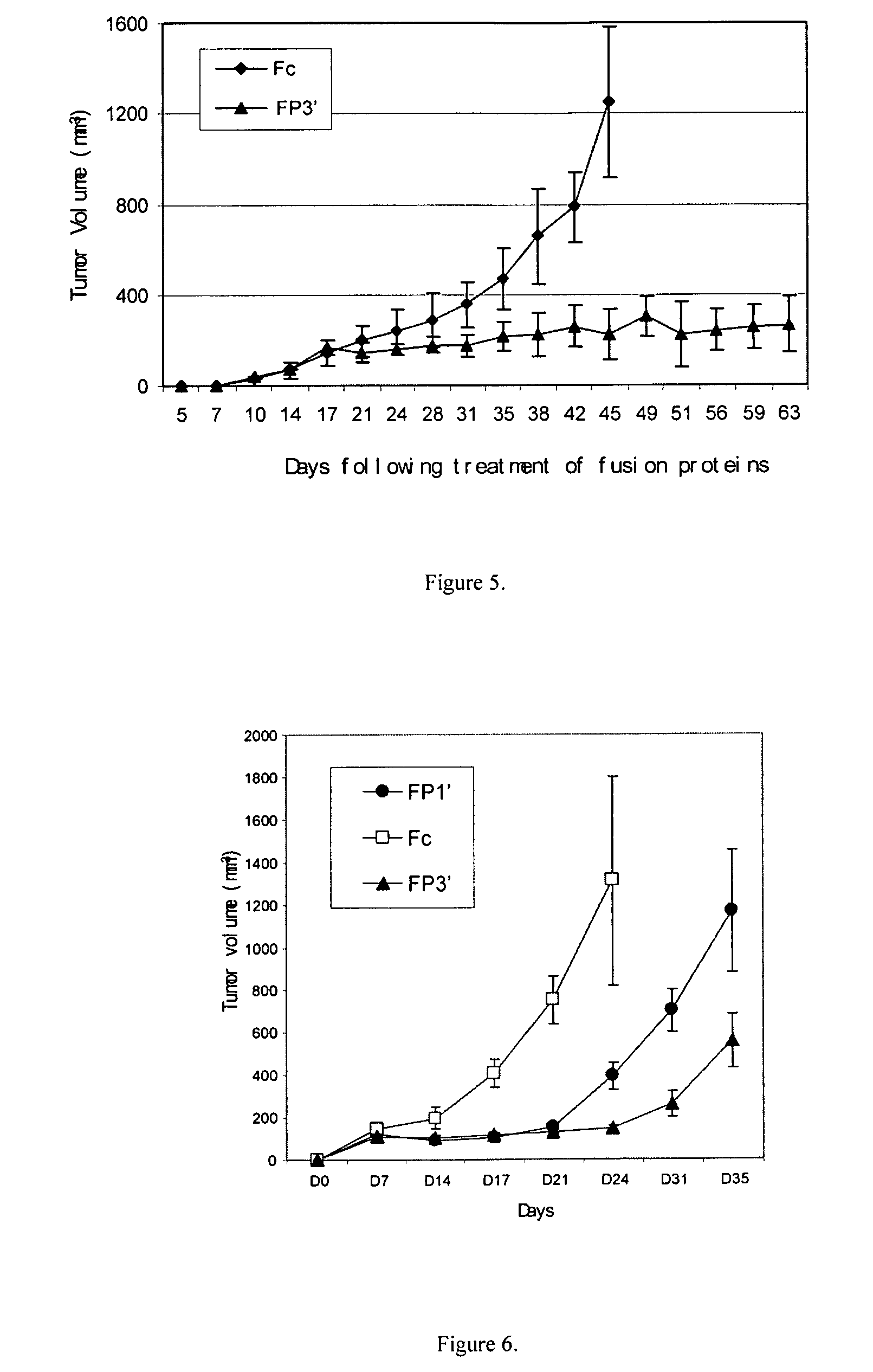Angiogenesis-inhibiting chimeric protein and the use
a chimeric protein and angiogenesis technology, applied in the field of gene engineering technology, can solve the problems of short serum half-life, inability to achieve effective serum concentration, short serum half-life, etc., and achieve the effect of substantiating the anti-chimeric effect, effectively inhibiting tumor growth, and prolonging animal li
- Summary
- Abstract
- Description
- Claims
- Application Information
AI Technical Summary
Benefits of technology
Problems solved by technology
Method used
Image
Examples
embodiment 1
he DNA Sequences Encoding the Chimeric Proteins and Construction of the Recombinant Vectors
[0047]Other than the immunoglobulin Fc coding DNA sequence, coding DNA sequences of the various chimeric proteins of the invention come from cDNAs of FLT-1 and KDR. Since FLT-1 and KDR are mainly expressed in vascular endothelial cells, the total RNA were extracted from human umbilical vein endothelial cells (HUVEC) using a RNA purification kit (QIAGEN); then cDNAs were synthesized from the RNA using AMV Reverse Transcriptese (Promega); then various FLT-1 and KDR fragments were PCR amplified with different primers; finally the sequences from FLT-1, KDR, and human immunoglobulin Fc (IgG1 Fc) were fused together by PCR to construct recombinant DNA sequences encoding various chimeric proteins. Structures of all six chimeric proteins (including FP1′ of the prior art) are shown in FIG. 1.
example 1
Construction of FP3′ Coding Sequence and Recombinant Vector
[0048]HUVEC cells (Clonetics) were cultured with EGM-2 media (Clonetics) in T-175 flasks. 1×107 cells were collected and subjected to the total RNA extraction using the RNA purification kit from Qiagen, and then cDNA was synthesized using the Invitrogen cDNA kit. The cDNA product was stored at −80° C. until usage. Following specific primers were used to PCR amplify various FLT-1 and KDR domains from the HUVEC cDNA.
[0049]PCR utilizing specific primers were used to amplify various FLT-1 and KDR domains from the HUVEC cDNA. Likewise, PCR utilizing specific primers from Lymph Nodes cDNA (BD Clontech) were used to amplify human IgG1 Fc was PCR.
[0050]The specific primers used are as follows:
[0051]for FLT-1 d2 forward: 5′-cctttcgtagagatgtacagtga-3′ (SEQ ID NO: 8);
[0052]for FLT-1 d2 reverse: 5′-tatgattgtattggtttgtccat-3′ (SEQ ID NO: 9);
[0053]for KDR d3-4 forward: 5′-gatgtggttctgagtccgtctca-3′ (SEQ ID NO: 10);
[0054]for KDR d3-4 rever...
example 2
Construction of FP1′ Gene and Recombinant Vector
[0059]FP1′ was constructed similarly as in Example 1. The only difference was that the targeted recombinant DNA was constructed by fusing together the 2nd Ig-like domain of FLT-1, the 3rd Ig-like domain of KDR, and the same human IgG1 Fc as in Example 1.
PUM
| Property | Measurement | Unit |
|---|---|---|
| concentrations | aaaaa | aaaaa |
| weight | aaaaa | aaaaa |
| weight | aaaaa | aaaaa |
Abstract
Description
Claims
Application Information
 Login to View More
Login to View More - R&D
- Intellectual Property
- Life Sciences
- Materials
- Tech Scout
- Unparalleled Data Quality
- Higher Quality Content
- 60% Fewer Hallucinations
Browse by: Latest US Patents, China's latest patents, Technical Efficacy Thesaurus, Application Domain, Technology Topic, Popular Technical Reports.
© 2025 PatSnap. All rights reserved.Legal|Privacy policy|Modern Slavery Act Transparency Statement|Sitemap|About US| Contact US: help@patsnap.com



